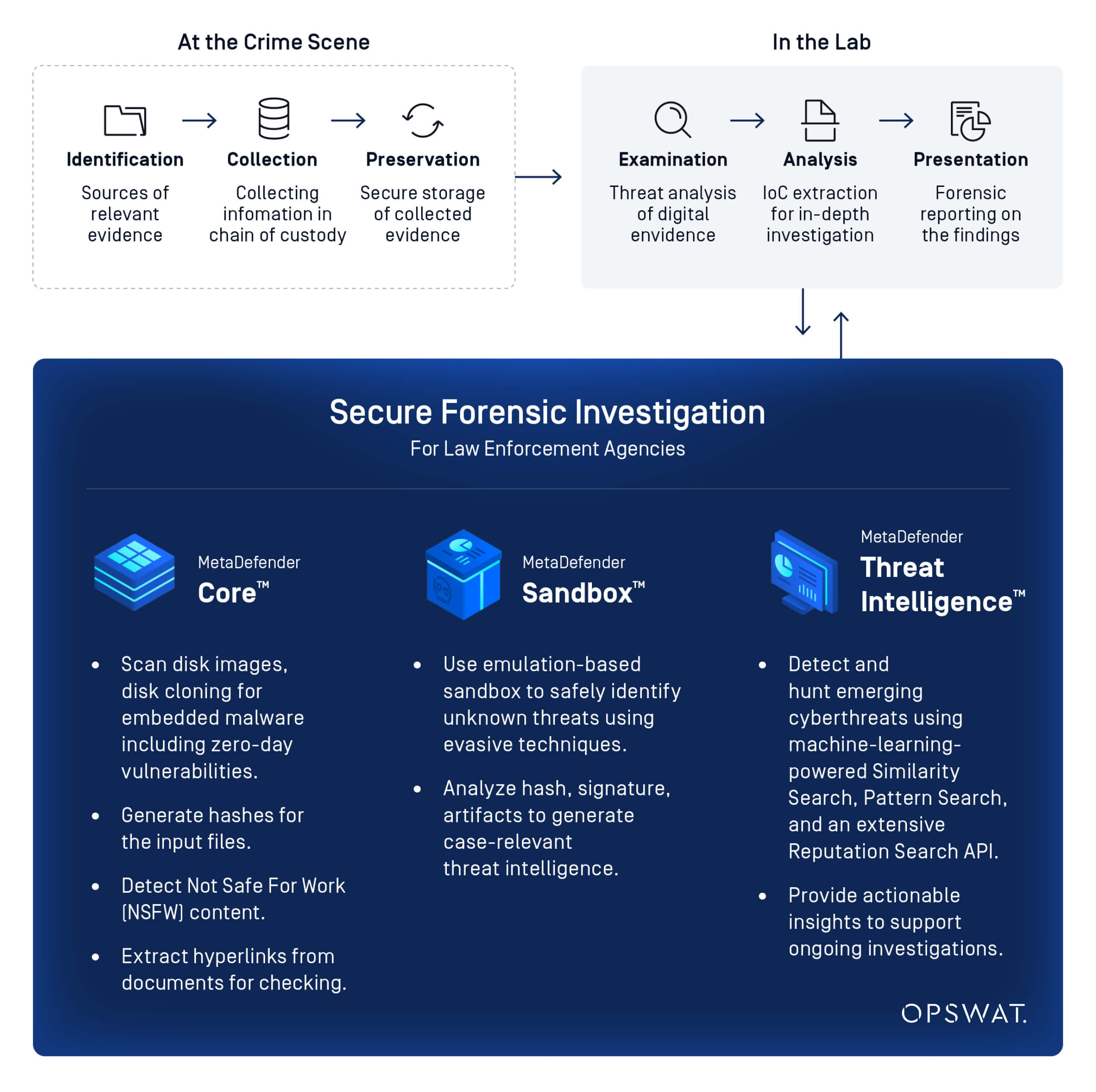Malware in Seized Files Delayed Investigations
Forensic science agencies around the world are feeling the pressure to modernize their digital evidence handling procedures. According to IBM, digital evidence is present in 90% of criminal cases with continued growth and demand for digital forensics expertise on the horizon. For law enforcement agencies, the integrity and speed of forensic analysis can directly influence the outcome of criminal cases.
Nowhere is this more critical than in digital forensics, an area where malware can lurk inside evidence collected from suspects, potentially corrupting tools or delaying justice. U.S. Courts data indicates that the median duration of criminal cases is about 7 months and 10 months for civil cases. This extended timeframe requires law enforcement to manage large volumes of digital evidence over time, increasing the need for strong cybersecurity protocols to ensure its integrity.
Though specific time frames and processes vary in length from country to country, similar security challenges are universal—with our client being no exception. Faced with an increasing volume of digital evidence, from mobile phones and laptops to external drives and cloud-based data, the agency needed to ensure that malicious files didn’t compromise their systems or investigative accuracy.
The volume of digital evidence we handle has grown dramatically over the past few years. But many of these files are infected with deeply embedded malware. If one of those slips through, it could contaminate our forensic environment or delay an entire case.
Lab Director
This risk wasn’t theoretical. Legacy antivirus tools often failed to detect sophisticated threats hidden in common file types. Meanwhile, manual analysis methods were slow and resource-intensive, leading to significant backlogs in evidence processing.
“In some instances, we couldn’t even start analysis for days because of bottlenecks in the malware scanning process. That simply wasn’t sustainable with the kind of caseload we’re expected to manage.” - Lab Director
Integrating Multi-Layered Threat Prevention
By implementing OPSWAT’s advanced threat prevention solutions, the agency transformed its evidence intake process. Every digital artifact now passes through a multiscanning and behavioral analysis pipeline before reaching forensic tools.
- Metascan™ Multiscanning with 30+ AV Engines: MetaDefender Core scanned all digital files using over 30 anti-malware engines, dramatically increasing detection rates compared to single-engine antivirus tools.
- Enhanced Malware Analysis: Suspicious or unknown files were automatically emulated in a secure sandbox environment to observe their real-time behavior, revealing sophisticated threats that signature-based detection would miss.
- Advanced Threat Intelligence: With OPSWAT’s Similarity Search powered by machine learning and AI, Pattern Search, and Reputation Search API, our client was able to detect and hunt cyberthreats with greater speed and efficiency, gaining actionable insights to support ongoing investigations.

With OPSWAT’s multiscanning capabilities and emulation-based sandbox, we get both depth and speed. Files are cleared or flagged in minutes, not hours.
Cybersecurity Specialist
The Outcome: Faster Investigations, Safer Evidence Handling
The impact was immediate and measurable across the agency’s forensic workflows:
100% of Files Scanned Pre-Analysis
Every file from seized devices was now verified safe before forensic examination, eliminating risks to analysis tools and results integrity.
Malware Risk Eliminated
Embedded threats in files were proactively neutralized using Deep CDR™, with advanced threats undergoing thorough analysis using OPSWAT’s emulation-based sandbox.
Faster Case Processing
Automation reduced file clearance time from hours to minutes, accelerating case timelines and enabling law enforcement to act faster.
Minimized Incidents of Tool Corruption
Since deployment, failures or disruptions in forensic tools across labs have seen a substantial reduction.
Modern Threat Prevention for Enhanced Forensics
For a forensic science agency operating in a high-stakes environment, secure and efficient evidence handling is essential. OPSWAT MetaDefender Core and Sandbox equipped this government agency with the tools to ensure every digital artifact entering their labs was free of threats, fully traceable, and ready for analysis.
By modernizing their scanning infrastructure with multiscanning, behavioral analysis, and global threat intelligence, the agency now enables faster case resolutions, improved forensic reliability, and safer handling of digital evidence.
Ready to protect your critical workflows from file-based threats?





